World 🢖 Australia and Oceania 🢖 Polynesia 🢖 French Polynesia 🢖 Marquesas Islands
Megaliths 🢔 Archaeological wonders 🢔 Categories of wonders
Wonder
Me’ae Iipona
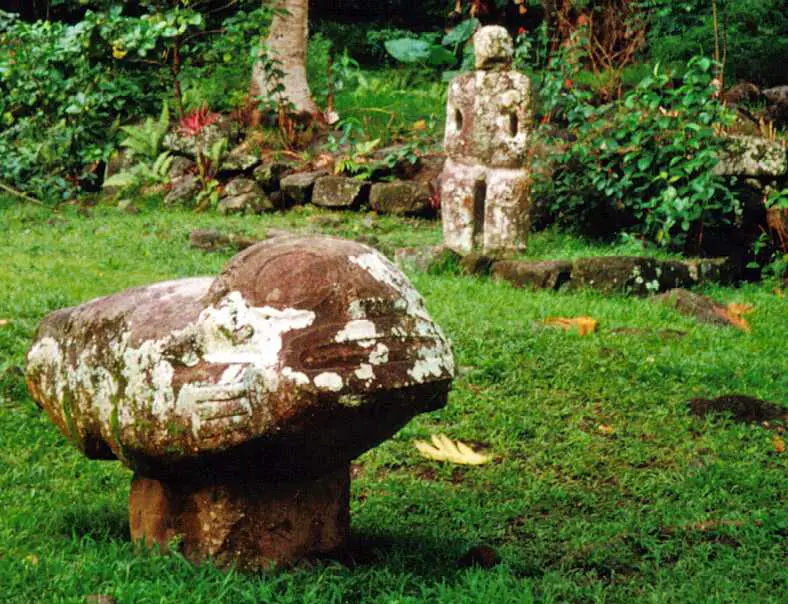
 In short
In short
Even the fantasy movies seem to be boring if compared to the reality in Marquesas Islands, especially the amazing archaeological monuments. One of the most surprising ones is Me’ae Iipona – the largest cult site in Marquesas.
 43.5%
43.5%
GPS coordinates
Location, address
Alternate name
Age
Culture
Map of the site
If you see this after your page is loaded completely, leafletJS files are missing.
 In detail
In detail
Me’ae – speciality of Marquesas
The culture of the Marquesas Islands is distinct, with many special words describing specific Marquesan things.
One such word is me’ae – this is an ancient Marquesan site, arranged for ceremonies and gatherings. Here were performed diverse rituals. Important were funerary rites, which often required human sacrifice.
The construction of me’ae also involved a sacrifice – there are found bones of humans or pigs among the stones.
Me’ae were linked with many tapu – most people were not allowed to visit and see them. Thus me’ae often were built in secluded places, far away from the villages.
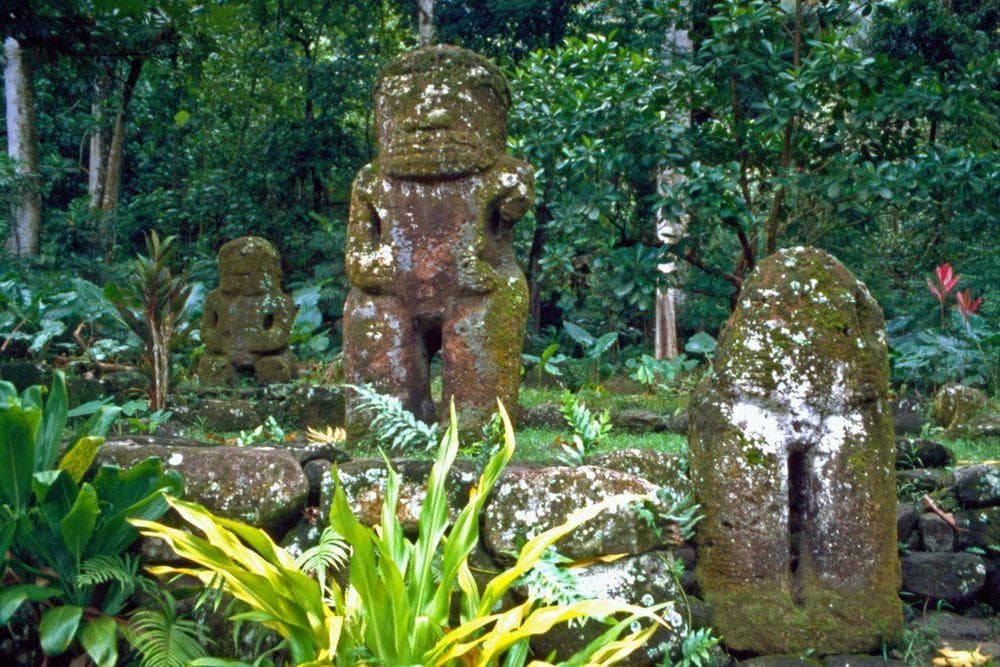
Often it is problematic to distinguish me’ae from the foundations of houses – paepae. Me’ae are distinguished by the presence of large banyan trees (aoa), growing among the stones of the structure. To add to the eerie feel in this place, among the aerial roots of these giant trees were hidden human skeletons. Now they have decayed, only skulls are found among the roots.
For the most part, me’ae consist of three levels, where each level may have several terraces.
The upper level often contains a stone-clad structure that is surrounded by a row of upright stone slabs. Some of these upright stones may be adorned with petroglyphs. Much used material here is ke’etu – a red or yellow volcanic tuff. The highest platform contains a set of sacred sculptures – tiki.
Me’ae Iipona – unique monument
High above the Puama’u village in the mountains there is located the largest and most interesting me’ae in the Marquesas Islands – Me’ae Iipona. The site has been always known to local people and was restored during the Marquesas Art Festival in 1991, in this same year it was studied by P.Ottino and M.N.Ottino. Now it is well-tended and always beautiful.
Me’ae Iipona is located in a river valley at the foot of a steep cliff. This complex, more than 5,000 m² large site contains 18 (!) stone sculptures (tiki) and two stones with petroglyphs. This is the highest concentration of tiki statues in Marquesas.
Tiki
Tiki is a characteristic element of Polynesian culture. These are statues made of a single piece of wood or stone. Tiki sculptures, in general, have an extension into the ground to keep them stable.
Most of the ancient wooden tiki have decayed now or moved over to museums, but stone statues often still are there. In total in Marquesas are known some 95 ancient stone tiki. Most of these valuable statues are located in Hiva Oa and Nuku Hiva and almost all of them – in me’ae.
Often the stones in me’ae are adorned with stone carvings – petroglyphs. Very frequent are carvings of turtles – sacred animals to the people of Marquesas, but there are many other interesting motives as well, often without convincing explanation of their symbolic meaning.
Among the 18 tiki of Me’ae Iipona two are unique – Tiki Takai’i and Maki’i Taua Pepe.
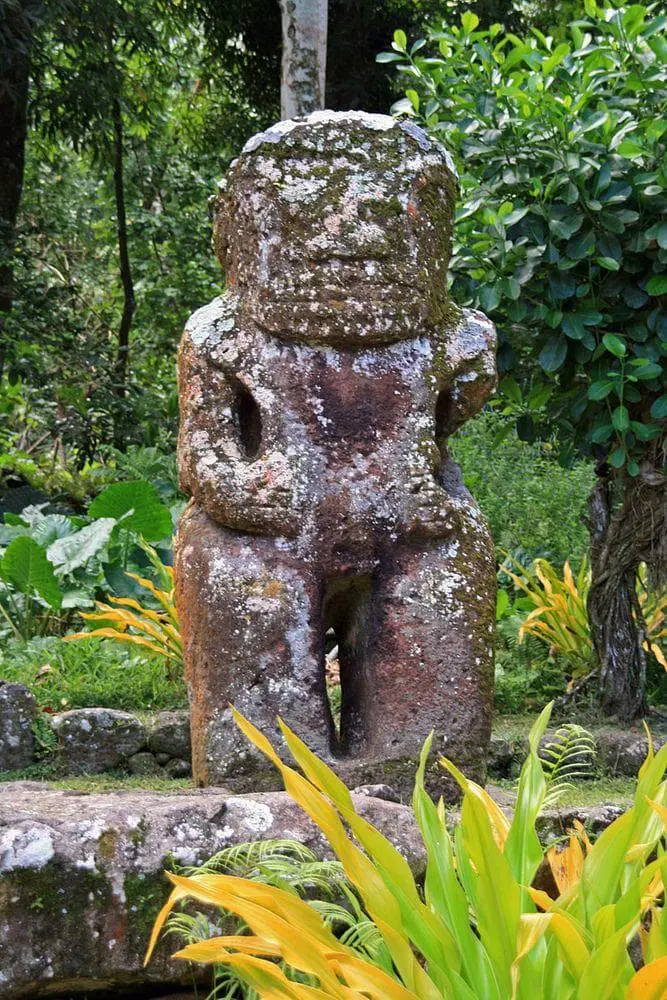
Tiki Takai’i
The largest tiki in Marquesas is Tiki Takai’i. This 2.43 m (2.67 m?) tall stone sculpture represents a powerful chieftain and warrior and now is a guardian spirit of this valley.
This is the largest stone sculpture in Polynesia except for the amazing moai in Easter Island.
Maki’i Taua Pepe and "llama"
One of the most mysterious Polynesian stone sculptures (well, nearly all of them are mysterious) is the weird Maki’i Taua Pepe (often called "flying tiki". This is a unique tiki which is rather horizontal than vertical. It is not entirely clear what it shows – but this could be a woman with a distorted face giving painful birth to the future goddess. She lies on her stomach – it would be weird if women of Marquesas really gave birth in this unlikely pose.
At the base of this tiki is carved a bas-relief which shows something that looks like a llama – an animal living only in South America. The carving is not too clear (see a photograph here) but there are almost no other alternatives. Islanders kept dogs – but the carving is not similar to dog.
Some evil tongues though tell that this carving initially was more similar to a dog, but then it was "adjusted" by Thor Heyerdahl to resemble llama in order to support his theory about the cultural link between South America and Polynesia.
Legend
A story tells that in this valley once lived Naiki tribe. They captured the chief of the neighboring tribe, sacrificed him and ate.
The revenge of neighbors was terrible – they routed the Naiki, only some escaped to the Easter Island.
The house of the defeated chief of Naiki was transformed into the present-day me’ae.
Many locals are convinced that spirits of deceased are still wandering in this site and even the westerners feel that this Me’ae Iipona is a very special place where one feels as if brought into distant and very different past.
References
- Rolett, W. Barry. Marquesan monumental architecture: blurred boundaries in the distinction between religious and residential sites. Archaeology in Oceania, Jul 2010. Accessed in 18.12.2011.
 Linked articles
Linked articles

Wonders of Marquesas Islands
Few places in the world can compare to the Marquesas Islands regarding the scenery. Marquesas are adorned with incredible cliffs, rock needles, ravines, and canyons – for the most part, covered with a lush tropical forest or dry scrub. More charm is added by the picturesque villages with countless flowers and above all – welcoming and artistic people.
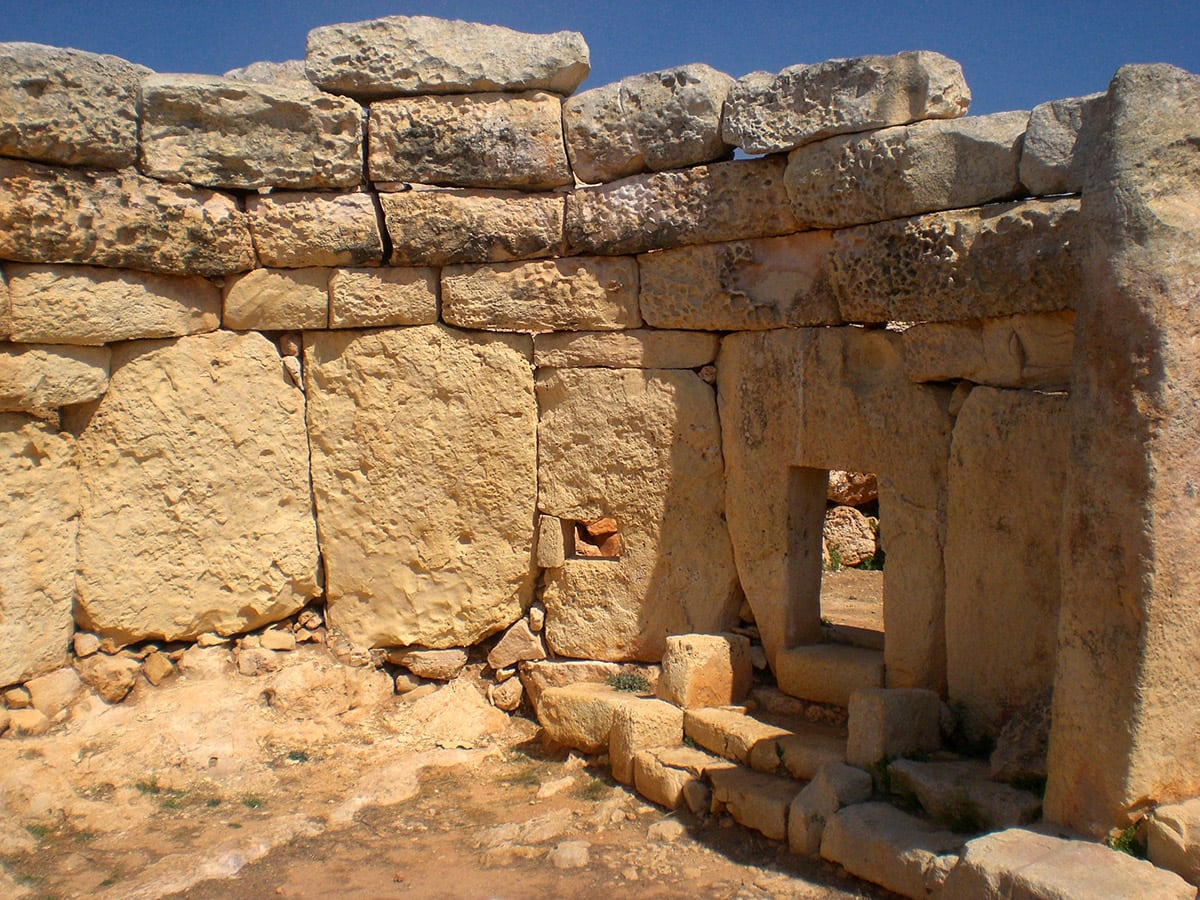
Megaliths
One of the most fascinating groups of archaeological monuments are prehistoric structures made of stones – megaliths. Through the ages, people have loved to strain their minds to find a sensible explanation for the many riddles posed by megaliths.
Even today, we can admit with some pleasure, there are thousands of mysteries left for us.
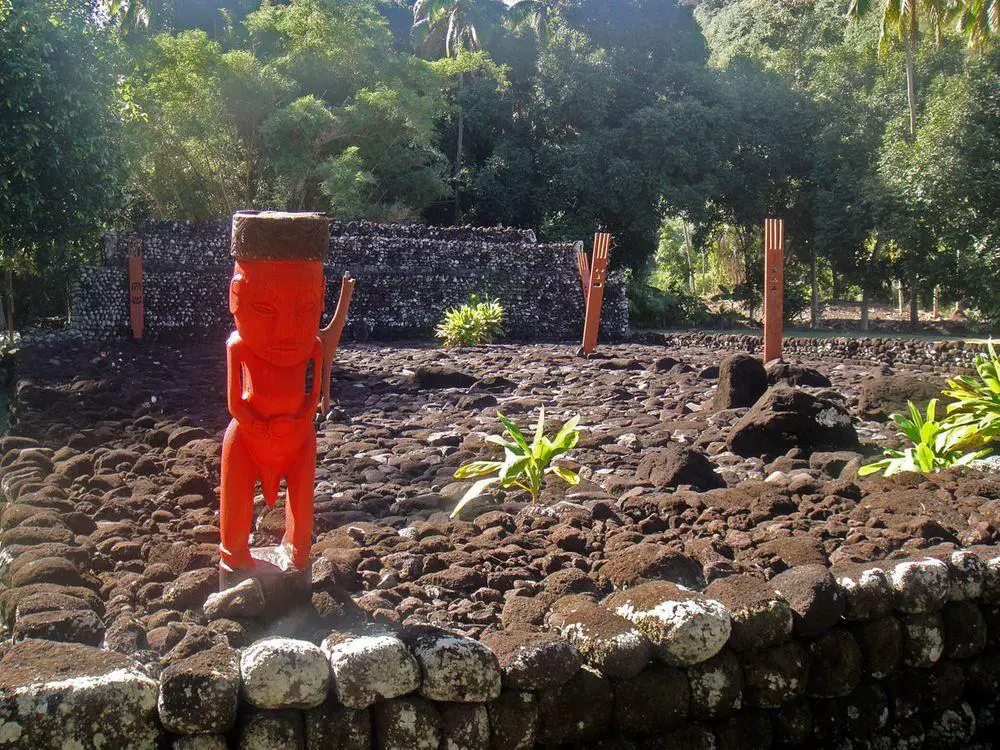
Wonders of French Polynesia
The most amazing wonders of French Polynesia are diverse natural landmarks – ecosystems, caves, waterfalls as well as archaeological heritage.
 Recommended books
Recommended books
Exploring the Marquesas Islands
Sailing to the South Pacific, whether from California or Panama, the first landfall is the Marquesas. Joe Russell, who has lived and sailed in the Marquesas, documents this beautiful little-known place. Volcanic, tropical beauty, and ease of navigation, make these islands some of the most interesting and dramatic cruising grounds in the world. The Marquesans-the island’s greatest asset – are proud of their history. They presume friendship with everyone, sharing their legends and traditions.
Manuiota’a: Journal of a Voyage to the Marquesas Islands
With great intelligence, understanding, emotion, and a breath of gentle irony, the American archeologist Robert C. Suggs and the Swiss author Burgl Lichtenstein describe a unique cruise to the remote Marquesas Islands in French Polynesia.


